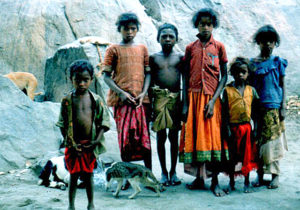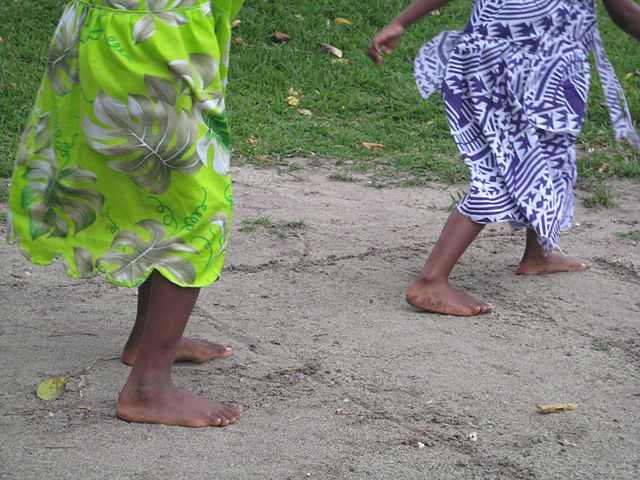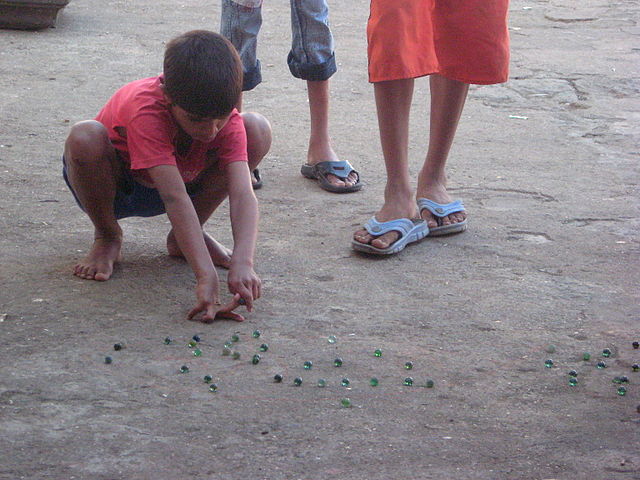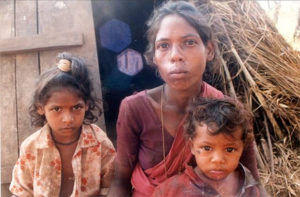With so much focus in the media lately on the continuing grim news about the pandemic, it is good to read about peaceful people such as the Paliyans who thrive on having fun. On Thursday last week, S. Ramarajan posted in his blog a description of six different games that are—or at least used to be—played enthusiastically by the Paliyan people.

The title of the blog post indicates the substance of the text: “Six Traditional Games Played in the Paliyar Tribal Community that Guarantee a Fun Time!” Ramarajan writes that games and entertainment are especially important to the people, an essential aspect of their lives, or at least they were before the era of electronic devices allowed people to be entertained by activities on small screens. His ancestors, he writes, “played a wide variety of games, which are nowadays hard to come by.”
Ramarajan describes in detail the ways six of the games were, and in some cases still are, played. “The Tree Game,” based on their lives in the forest, was played by children who climbed into trees and swung around from limb to limb chasing one another. The person being chased was already in a tree while the chaser was on the ground waiting for the game to start. If the person being chased escapes to another tree, the chaser has to go after another player.
The second game, called “Stick, Stick, Tray,” is played by two people. The first player dumps a pile of mud on the ground, breaks a stick into pieces, and attempts to hide the pieces in the mud. The object of the game is for the second player to find the pieces. When the stick is recovered, it is the turn of that player to hide the stick in the mud. It is a great way to “get our hands dirty,” the author writes.
The “Game of Pebbles,” number three in the list, is enjoyed by any number of players. The object of the game is for the players to accrue points by seeing who can get the most pebbles when they are tossed into the air. In the different rounds of the game, players toss a stone into the air and see how many other stones on the ground they can pick up before catching the first stone. They note the different numbers of stones the players have caught and conclude the game by adding up the scores to declare a winner.

“Hopscotch,” the fourth game, is entertainment for players hopping around squares drawn on the ground. They must hop from one square to another, stopping to pick up pebbles with their bare toes on the other foot. They must pick up a stone from each of the squares in turn and then the other players attempt to follow suit.
“Tony King” is a game played with marbles. The players dig a small hole just large enough for a marble. They then mark a boundary line that must not be crossed a short ways away from the hole. The object of the game is for the players to attempt to roll a marble into the hole. The player whose marble is closest to the hole has the right to roll another to see about getting one of them into the hole. Whoever is able to score by getting the most marbles into the target hole is declared the King. The game is played by children and adults.

The last game, called the “Pentagon Marble Game,” is played with two teams. Ramarajan takes many paragraphs to describe the complexities of the game but in essence the players roll their marbles to try and scatter target marbles inside a boundary line marked on the playing ground. The teams take turns in their playing.
This blog post about of the games played by the Paliyans adds another perspective to the information provided by anthropologist Peter Gardner, reporting on his fieldwork among them about 50 years ago. His observations about the importance of games to the people of that time can be compared to the blog post last week.
Gardner wrote in 1966, p. 394, that the Paliyan people avoid competition and have a strong belief in non-violence. When they play games, he continued, particularly games adopted from neighboring peoples, they exhibit neither competition nor cooperation. In fact, their individual performances are of no interest to other Paliyans.

Six years later, Gardner (1972, p. 423-425) provided more details about the Paliyan aversion to competitive games. He wrote that they are highly individualistic, neither cooperating very much nor competing at all. Any behavior that hampers the autonomy of an individual, such as cooperation or competition, is considered to be disrespectful—or, in their terms, to lower one’s status. Thus, their egalitarian ideal prohibits cooperation and competition. Their desire for autonomy is also manifest psychologically—they refrain from forming emotional ties except within the nuclear family, and ties with other relatives will be friendly but not effusive.
They express their code of nonviolence quite strongly, Gardner continued—one turns the other cheek if one is struck in the face. They extend their injunction against violence to a prohibition of competition, which comes, they feel, from desires for superiority, control, and rivalry. They play a game comparable to prisoner’s base, though the game has no competition or cooperation in it. No one catches anyone else, people are hardly interested in the performance of others, and the game mostly resembles a ballet of prima donnas. They do not like to be set off above their peers.
Clearly, the approach to playing games differs in the Paliyan community described by Ramarajan last week from the observations by Gardner years ago. Such is to be expected from different communities and from the changes brought about by the availability of smartphones and the internet, even in remote areas of southern India.